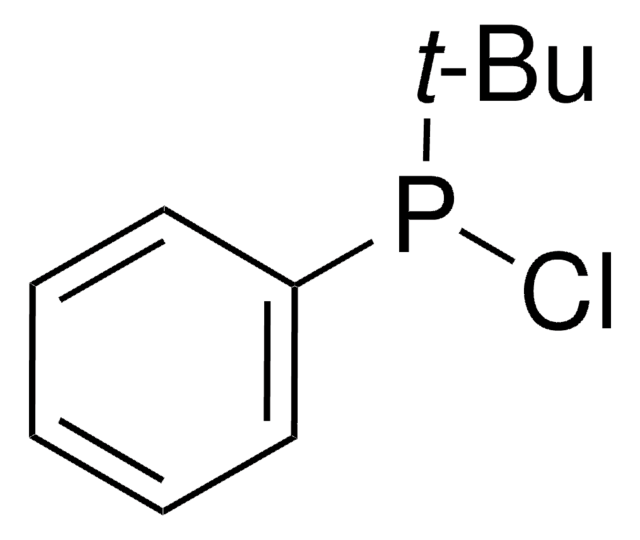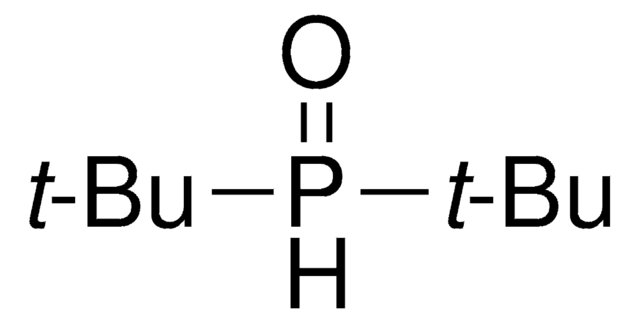674389
Phenylphosphine
ca. 10% weight in hexanes
About This Item
Prodotti consigliati
Densità del vapore
3.79 (vs air)
Tensione di vapore
760 mmHg ( 160 °C)
Impiego in reazioni chimiche
reaction type: Buchwald-Hartwig Cross Coupling Reaction
reaction type: Heck Reaction
reaction type: Hiyama Coupling
reaction type: Negishi Coupling
reaction type: Sonogashira Coupling
reaction type: Stille Coupling
reaction type: Suzuki-Miyaura Coupling
reagent type: catalyst
reagent type: ligand
Indice di rifrazione
n20/D 1.578 (lit.)
P. eboll.
160 °C (lit.)
Densità
0.6912 g/mL at 25 °C
1.001 g/mL at 25 °C (lit.)
Gruppo funzionale
phosphine
Temperatura di conservazione
−20°C
Stringa SMILE
Pc1ccccc1
InChI
1S/C6H7P/c7-6-4-2-1-3-5-6/h1-5H,7H2
RPGWZZNNEUHDAQ-UHFFFAOYSA-N
Cerchi prodotti simili? Visita Guida al confronto tra prodotti
Categorie correlate
Avvertenze
Danger
Indicazioni di pericolo
Consigli di prudenza
Classi di pericolo
Acute Tox. 4 Oral - Aquatic Chronic 2 - Asp. Tox. 1 - Eye Irrit. 2 - Flam. Liq. 2 - Repr. 2 - Skin Irrit. 2 - STOT SE 3
Organi bersaglio
Central nervous system
Codice della classe di stoccaggio
3 - Flammable liquids
Classe di pericolosità dell'acqua (WGK)
WGK 3
Punto d’infiammabilità (°F)
-14.8 °F - closed cup
Punto d’infiammabilità (°C)
-26 °C - closed cup
Certificati d'analisi (COA)
Cerca il Certificati d'analisi (COA) digitando il numero di lotto/batch corrispondente. I numeri di lotto o di batch sono stampati sull'etichetta dei prodotti dopo la parola ‘Lotto’ o ‘Batch’.
Possiedi già questo prodotto?
I documenti relativi ai prodotti acquistati recentemente sono disponibili nell’Archivio dei documenti.
Il team dei nostri ricercatori vanta grande esperienza in tutte le aree della ricerca quali Life Science, scienza dei materiali, sintesi chimica, cromatografia, discipline analitiche, ecc..
Contatta l'Assistenza Tecnica.












